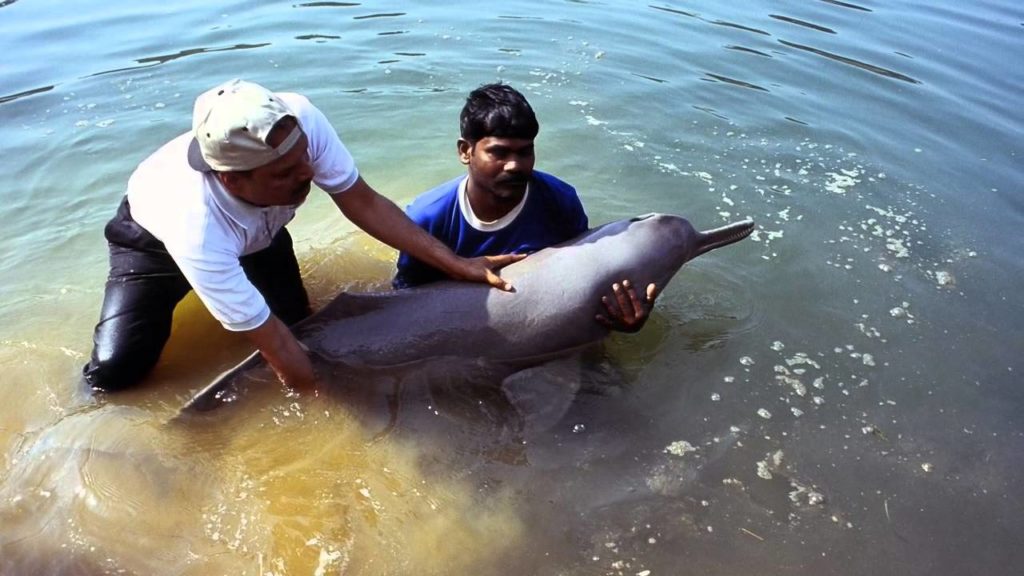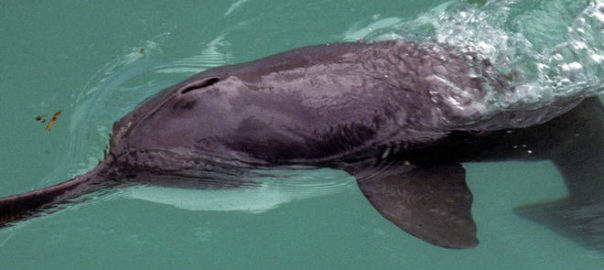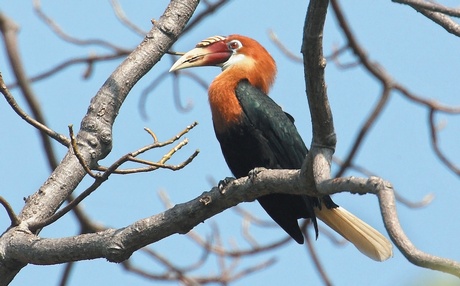A survey that was conducted by the Uttar Pradesh forest department and WWF –India on the Ganga River Dolphins brings up some really exciting news – the dolphin population in the state has increased from 22 in 2015 to 33 in 2018. The survey was conducted under the ‘My Ganga, my Dolphin’ programme covering a distance of 205 km from Bijnow barrage to Narora barrage along the Ganga river from October 10th – 15th this year.
Read More: 5 October To Be Celebrated As Ganga River Dolphin Day
Of the 33 dolphins, three are calves. According to the officers, this means that the dolphins which are slow-breeders have flourished on the stretch indicating positive river health and biodiversity.
“The major dolphin population is found beyond Allahabad, Varanasi and Balia districts, besides a small population found between the two barrages in western UP. In the survey, we found 30 adults and three calves. This is an encouraging sign as dolphins are slow breeders but their population is increasing as they find sustainable environments and habitat,” Sanjeev Yadav, senior coordinator from WWF-India, said.
“These dolphins breed every two or three years. Finding three calves amongst a small population is encouraging. A normal dolphin here has a length of 1-1.5 metre. The two barrages are close and it is one of the pristine habitats and is rich in biodiversity,” he added.
Of the 205 km that was surveyed, there was a 106.9km stretch from Bijnor to Garhmukteshwar, which is along the Hastinapur Wildlife Sanctuary, and another 98km stretch from Garhmukteshwar to Narora which is a Ramsar site.

What is a Ramsar site?
The Convention of Wetlands, called the Ramsar Convention, is the intergovernmental treaty that provides the framework for the conservation and proper use of wetlands and resources. India became a party to the convention in February 1982. India has 26 sites designated Wetlands of International Importance (Ramsar Sites).
Read More: Receding Habitat Threatening Ganga River Dolphins
One of the causes for the encouraging numbers of dolphins is due to the sustained efforts by WWF-India to spread awareness and sensitize the village residents about the river dolphins. WWF-India has a concept of ‘water schools’ under which agencies have identified nearly 70 schools near the stretch and are sensitising students about the environment, biodiversity and the need to conserve the species.
“The figures in the survey are encouraging as calves have been found, which means they are breeding. This is an indicator that the stretch is a suitable habitat for dolphins. Here, we also have a population of Ghariyals. We have ‘water schools’ run by WWF-India, to help sustain dolphins, and sensitise village residents. They now regard dolphins as a part of their ecosystem,” Lalit Verma, conservator of forests (Meerut), UP forest department, said.
Ganga River Dolphis are India’s National Aquatic Animals and considered threatened. They are one of the only 4 varieties of freshwater dolphins found in the world. The other three are the baiji now likely extinct from the Yangtze River in China (reported extinct since 2006), the bhulan of the Indus in Pakistan and the boto of the Amazon River in Latin America. Although there are several species of marine dolphins whose ranges include some freshwater habitats, these four species live only in rivers and lakes. Of these, two belong to the subspecies of the South Asian River Dolphin – The Ganga River Dolphin (Platanista Gangetica), or ‘Susu,’ and the Indus Dolphin ‘bhulan’ found in the Indus River in Pakistan, and Beas in India.
Indicators of Aquatic Health
The Ganges River Dolphin is a good indicator of a healthy aquatic environment. Hence it is known as the ‘Tiger of the Ganges’ and acts as an indicator species. According to officials, they are found in the Ganges-Brahmaputra-Meghna and Karnaphuli-Sangu river systems of India, Nepal, and Bangladesh. Recent population estimates in its entire disibution range recorded around 3,000 individuals. Out of this, more than 80% are within Indian territory.
Read More: Poachers Kill Ganga River Dolphin In Bihar
Source:






3 thoughts on “Uttar Pradesh Sees Rise In Ganga River Dolphin Numbers”